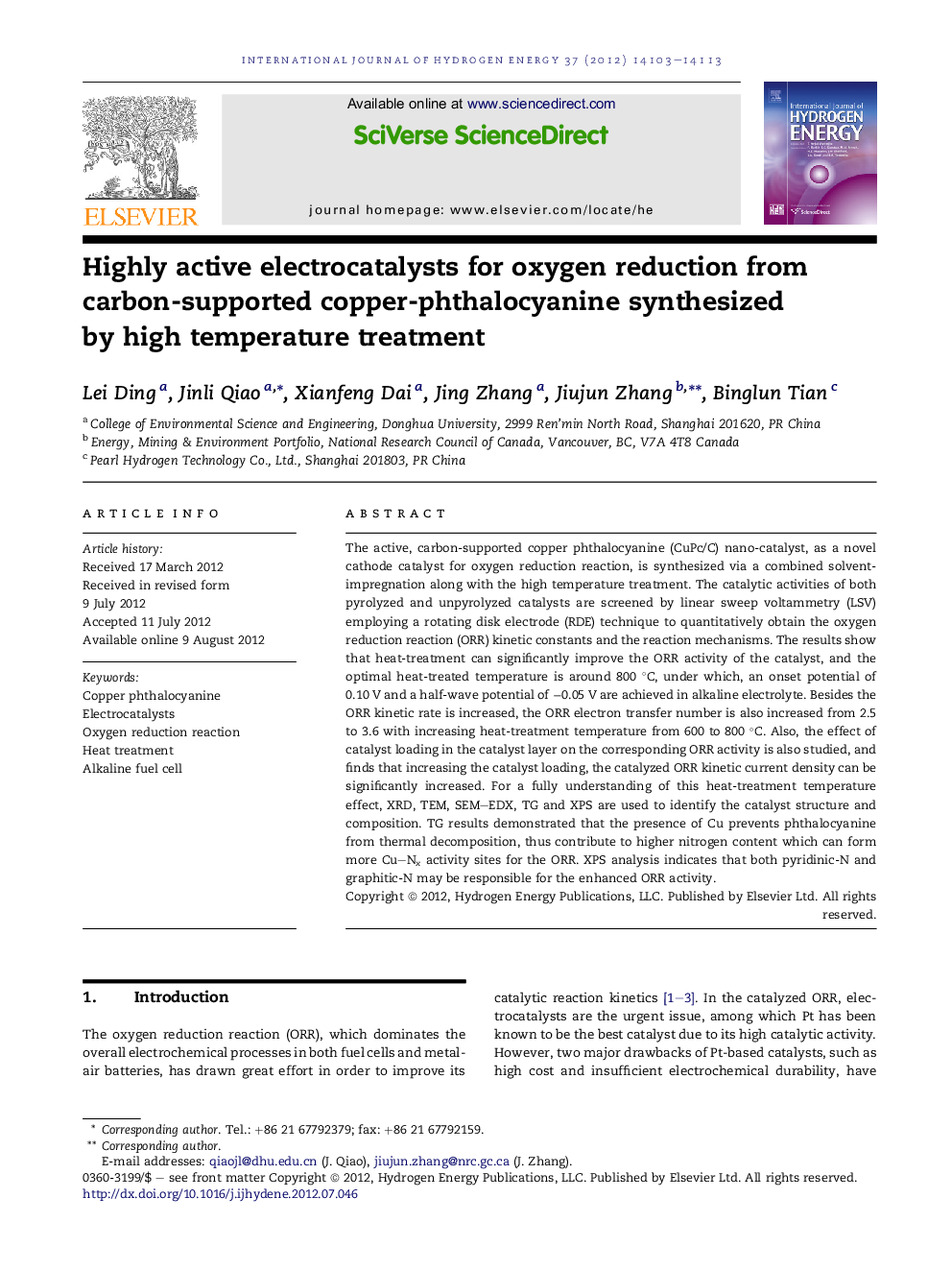| Article ID | Journal | Published Year | Pages | File Type |
|---|---|---|---|---|
| 1274753 | International Journal of Hydrogen Energy | 2012 | 11 Pages |
The active, carbon-supported copper phthalocyanine (CuPc/C) nano-catalyst, as a novel cathode catalyst for oxygen reduction reaction, is synthesized via a combined solvent-impregnation along with the high temperature treatment. The catalytic activities of both pyrolyzed and unpyrolyzed catalysts are screened by linear sweep voltammetry (LSV) employing a rotating disk electrode (RDE) technique to quantitatively obtain the oxygen reduction reaction (ORR) kinetic constants and the reaction mechanisms. The results show that heat-treatment can significantly improve the ORR activity of the catalyst, and the optimal heat-treated temperature is around 800 °C, under which, an onset potential of 0.10 V and a half-wave potential of −0.05 V are achieved in alkaline electrolyte. Besides the ORR kinetic rate is increased, the ORR electron transfer number is also increased from 2.5 to 3.6 with increasing heat-treatment temperature from 600 to 800 °C. Also, the effect of catalyst loading in the catalyst layer on the corresponding ORR activity is also studied, and finds that increasing the catalyst loading, the catalyzed ORR kinetic current density can be significantly increased. For a fully understanding of this heat-treatment temperature effect, XRD, TEM, SEM–EDX, TG and XPS are used to identify the catalyst structure and composition. TG results demonstrated that the presence of Cu prevents phthalocyanine from thermal decomposition, thus contribute to higher nitrogen content which can form more Cu–Nx activity sites for the ORR. XPS analysis indicates that both pyridinic-N and graphitic-N may be responsible for the enhanced ORR activity.
► Carbon-supported CuPc/C exhibits high catalytic activity for the ORR in alkaline solution. ► The catalytic activity strongly depends on the heat-treatment temperature for the catalyst synthesis. ► An onset potential of 0.10 V and a half-wave potential of −0.05 V are achieved in 0.1 M KOH. ► The ORR electron transfer number is increased from 2.5 to 3.6 with increasing heat-treatment temperature from 600 to 800 °C. ► Cu species contribute to a high N content forming more Cu–Nx activity sites for the ORR.
